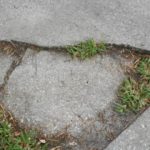Make Your Existing or Future Home a Greener Place to Live
THE RIGHT SITE
- A site with smart landscaping is important to help make your home comfortable, affordable and attractive.
- Water-efficient bermuda or buffalo grass is planted in sunny areas.
- Plants, shrubs and trees that grow successfully in Northern California.
- Gutters and downspouts direct water away from house.
- An irrigation system conserves water by using devices such as manual flow-control valves, a rain shut-off, and a timer with multiple start times.
THE RIGHT DESIGN
- Comfort and economy is possible when a house is designed for its site and climate.
- Minimal Solar Heat Gain:
- Longest walls face north and south.
- Most windows face north and south.
- Most windows are shaded on the outside by overhangs, covered porches, awnings, trees, trellises, or pergolas.
- Garage and least-used rooms are positioned on west side as buffers from the west sun.
- Maximum Ventilation:
- Most windows are operable and positioned for cross breezes.
- Most rooms have windows on two walls.
- High, centrally-located, operable windows enable hot air to move up and vent to the outside.
THE RIGHT EXTERIOR
Cool Shell and Attic:
- Light colored paint, siding, and roofing are used.
- A continuous vent strip runs underneath the roof overhang to let air into the attic.
- Roof ridge has a continuous strip of venting or several passive vents close to the ridge.
- Attic insulation does not block air flow path between roof overhang vents and ridge vents.
- Attic has a radiant barrier below the roof decking or between the rafters (looks like aluminum foil). Radiant barrier is especially effective when ductwork is in the attic.
Minimum Maintenance:
- Exterior wall material is low maintenance (brick, stone, stucco, cement board).
- Roof has forty-year life (metal or tile).
- Decks are made of materials that have at least a 10-year life (not solid wood).
Maximum Insulation:
- Insulation is at least 10 inches deep and evenly distributed
- Wall insulation is a type that fills every nook and cranny, such as wet-blown cellulose.
Optimal Windows:
- Unshaded windows have solar screens or low-e glass (except on the north side).
- Window frames are wood, vinyl or fiberglass.
THE RIGHT INTERIOR
Using the right materials can improve indoor air quality and increase comfort. Choosing energy efficient appliances will save you money.
Healthy Materials:
- Flooring is mostly a hard surface, such as concrete, tile or wood.
- Other flooring materials are natural wool, jute, sea grass, cork or true linoleum.
- No vinyl wallpaper is used in the home.
- Bath has exhaust fan vented to outside.
- Cook top has exhaust fan vented to outside.
- Laundry/utility room has exhaust fan vented to outside.
Efficient Appliances and Lights:
- Water heating has a 10-year warranty.
- An Energy Guide Label that indicates the appliance is in the top 25% of the efficiency scale.
- Exterior lights have light and motion detectors to conserve energy.
Efficient Heating and Cooling:
- Ceiling fans in all major rooms.
- Home has a whole-house fan to exhaust heat.
- Home has a programmable thermostat.
- Home has an A/C with a cooling efficiency is 12.0 SEER or higher.
Well-sealed Ducts:
- Ducts have been pressure-tested for leaks by a qualified technician. Remember, most houses lose about 25% of conditioned air due to leaky ducts. Leaks cause air quality and safety problems, too.
Air Filters:
- The filter is accessible and easy to change.
- The system has a 6″ wide filter cabinet with pleated-media or electronic filter (not electrostatic).
THE RIGHT ECONOMY
- Using local businesses and products keeps the local economy healthy, while reducing the affects of transportation on air quality.
- Regional materials of local artists and artisans are used for home items.
THE RIGHT LIFESTYLE
- The right location of your home improves your quality of life.
- The home is conveniently located for activities, such as work, school, entertainment, recreation, and public transportation.
- Traffic allows safe walking and biking.

